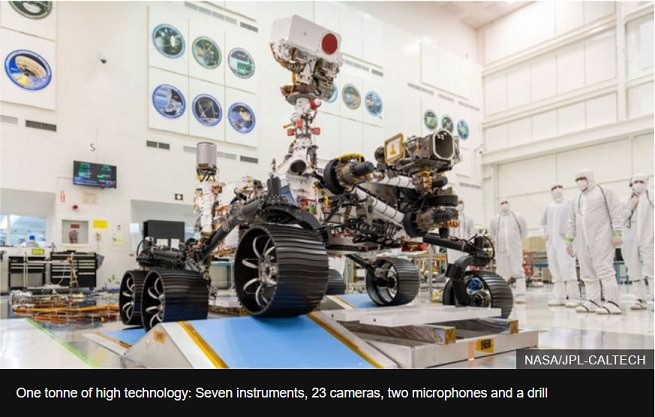
The multi-billion-dollar, decade-long effort to bring rock samples from Mars to Earth gets under way on Thursday.
It starts with the US space agency's latest rover, called Perseverance, which is launching from Florida.
When the robot lands on the Red Planet in February, it will not only search for evidence of life but also package rock samples for return to Earth labs.
This will take an elaborate mix of future missions, but it all begins with the one-tonne, six-wheeled rover.
Lift-off of Perseverance on a United Launch Alliance Atlas rocket is timed for the start of a two-hour window that opens at 07:50 local time (12:50 BST; 11:50 GMT).
It's the third mission heading to Mars this month after launches by the UAE and China.
Once Perseverance takes off from Cape Canaveral Air Force Station, it faces a seven-month cruise to the Red Planet.
It's being targeted at a 40km-wide, near-equatorial bowl called Jezero Crater.
Satellite images suggest this held a lake billions of years ago. Scientists say the rocks that formed in this environment stand a good chance of retaining evidence of past microbial activity - if ever that existed on the planet.
Perseverance will spend at least one Martian year (equivalent to roughly two Earth years) investigating the possibility.
Unlike the previous four rovers Nasa has sent to Mars, its new machine is equipped to directly detect life - either current or in fossilised form.
But any evidence it uncovers will almost certainly have its sceptics, which is why researchers want to bring whatever Perseverance finds back home for the deeper analysis only sophisticated laboratories on Earth can perform.

